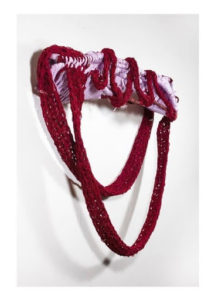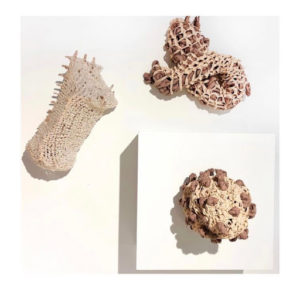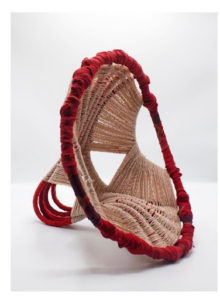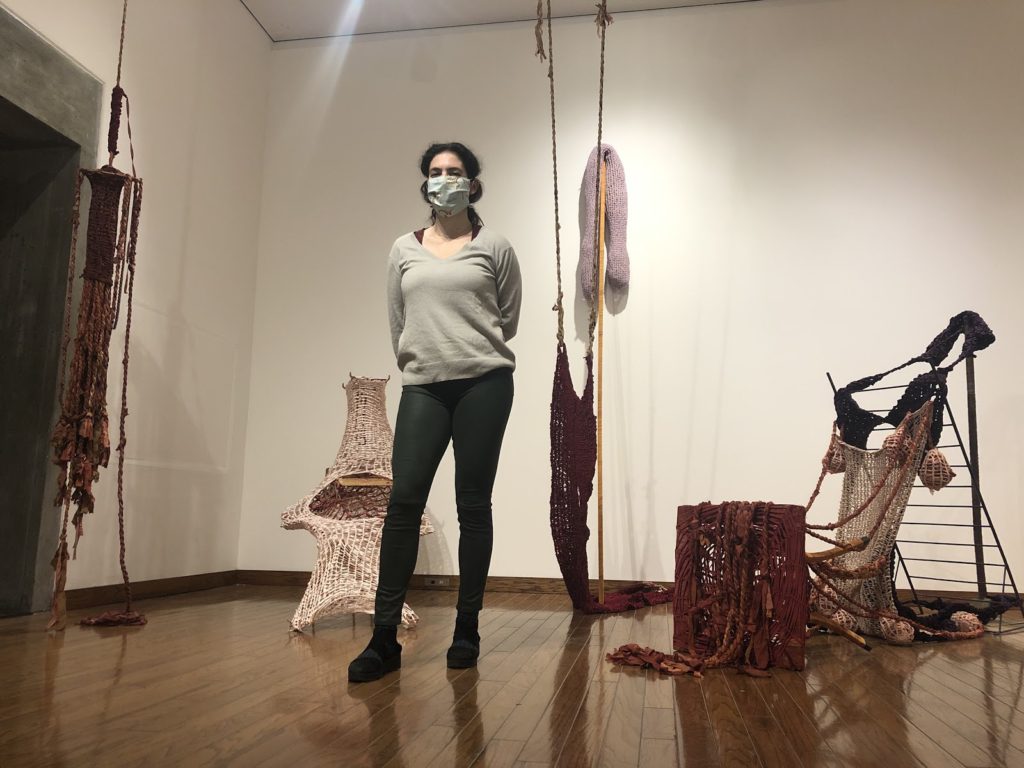Creating Modes of Contact in a Contactless World
Amidst a pandemic, Katie Shulman finds new meanings in her art
—By Grace Shulman
On her website, Katie Shulman poses the question to her readers, “What does it mean to center your life’s work on creating points of contact?” Immediately, I was struck by the question. As I sat by my computer deciding what I wanted to ask her, I couldn’t shake this question that she had asked me.
As we know, the COVID-19 pandemic has forced us all to adapt to a new virtual world. Students, teachers, and other professionals have all taken to platforms like Zoom, while the art world and places where we experience art are seemingly out of bounds. Just as Andrew Dickson tells us in Bye bye, Blockbusters: Can the Art World Adapt to Covid-19?, “an industry that has become synonymous with hyper-connectedness and global mobility is now, like the rest of us, at a standstill.” So, when thinking about Shulman’s question, I wondered how as an artist she could center her life’s work on creating points of contact when most points of contact don’t really exist during a pandemic.
Beginnings in Michigan
Having grown up in Bethesda, Maryland, and then later attending the STAMPS School of Art and Design at the University of Michigan, Katie Shulman is no stranger to meeting new people and finding connections in different places. “I didn’t think I was a smart person before I went to Michigan,” Shulman began. “Although it may sound pathetic, I didn’t think my mind had value.” Growing up attending an esteemed high school in Washington, D.C, that, frankly, did not prioritize the arts at all, Shulman was socialized to think that she was not smart for being an artist. It was not until she arrived at The University of Michigan, that everything changed. “Everyone treated me like what I thought mattered, and it was that feeling of worth that gave me the space and confidence to learn and invest in myself and my artwork.”
Landing any post-grad job is a lot easier said than done, and after graduating in 2010, Shulman described her first job at a fancy New York Italian bathtub store as nothing short of “really weird.” Luckily, it was only uphill from there, and her job interning at the Manhattan Jewish Community Center (JCC) in their studio art department was what set the stage for her future achievements. Sigrid, Director of the Art Studios at the JCC, met Shulman in 2011 and taught her how to be an arts administrator. Had it not been for Sigrid, Shulman would have never landed her next job as a full-time art administrator at the 92nd St. Y, a New York arts institution, or as Shulman put it, “a really a significant culture hub, one where I was working with these insane teaching artists.”
However, it was not until these “insane teaching artists” started to find out that Shulman, herself, had an art degree from the prestigious University of Michigan that they encouraged her to go back and invest in her own work. Shulman valued her years as an art administrator, but it was the connections she made and the people she met, that ultimately made her realize that her art really was worth pursuing. “It was through this encouragement that I found my way back to my work,” she says, “and I thought: oh well, I should go to grad school.” It was this same encouragement that, once upon a time, she had gotten at the University of Michigan.
And thus, in the Fall of 2017, Shulman began graduate school at Syracuse University. She earned her Masters in Fine Arts in the Spring of 2020 and was hurled into the great unknown: a COVID art world.
Creating Contact Through Art
“Today, my points of contact don’t exist, so it’s almost like I am relegated to making them with inanimate things…to finding it in my work,” Shulman told me. The points of contact Shulman once had at the University of Michigan and in New York, points of contact that helped form her identity as an artist, currently remain out of reach. So for now, she focuses on what contact she can create through her art.
Shulman categorizes her art as fiber-based sculptures and installations made through a “choreographed process.” She begins by tearing, knitting, wrapping, and dying objects available to her, such as clothing, bedsheets, elastic bra strapping, wire, or plastic tubing. With these materials, she then establishes a physical cadence that is reminiscent of movement patterns that had been imprinted in her body from her years of competitive rowing in high school.
This may be how Shulman describes her art today, but that was not always the case. By the time she began grad school, Shulman felt plagued by the feeling that something was missing in her artwork. “What is the meaning of me manipulating these materials in this way? Is it about politics, is it about my identity or is it about something else?” she would ask herself.
It wasn’t long before Shulman began to double down on the idea that where she draws meaning in her work is from her process, how she works with the materials, how she puts the materials together, how her body feels while doing those things, and how her body affects the materials she works with.
This last part was her, “aha!” moment. Unconsciously, as she increasingly began to work in pinks, browns, purples, she realized they were all colors she associated with bodies. Purple reminded her of bruises, while pink reminded her of rosy cheeks and the inside of mouths. “I am thinking a lot about bodies and my body,” Shulman told me, “I am conscious of my body and how it feels when I am making my art.”
It is through that that she creates intention. The meaning in her work comes from her putting materials together and connecting with her art, both physically and emotionally. She is not trying to make any certain ‘thing,’ but rather, her process is the ‘thing’ itself. And because of this, Shulman often finds that she doesn’t have the words to describe what she is trying to articulate. “My work is its own language,” said Shulman, “I think my work is seen as something a little more metaphorical or poetic, rather than didactic.”



(Photo Credit: Instagram @katie.shulman)
New Beginnings in Michigan…
In January of 2021, Shulman decided to move to Detroit, Michigan. “Detroit is meaningful to me because it allows me to go back to the place adjacent to where I truly became an artist and connect with my 22-year-old self, all the while being surrounded by a slew of creative people.”
What many people may not know about Detroit is that it has been called “America’s Berlin,” as reported by VICE. Both cities have suffered separate, but equally “debilitating” economic crises, but both have come out with a beautiful and unique art culture. And today, Detroit has become a playground for creators of diverse backgrounds, due in large part to its lower rent and increasing gallery spaces.
Although she believes it is too early to tell what her part in the larger story of the city will be, Shulman knows there is space to “become” here. But for now, Detroit and her don’t know each other, and her contact with it remains aspirational. When it comes time, she hopes to “listen to those in the city, and respond,” just as she does with the materials in her studio. She hopes to build her connection to the city once COVID is over, and one day “become a part of Detroit’s fabric.”
Feature Photo: Katie Shulman at the Everson Museum in Syracuse, NY. Photo Credit: Katie Shulman.

